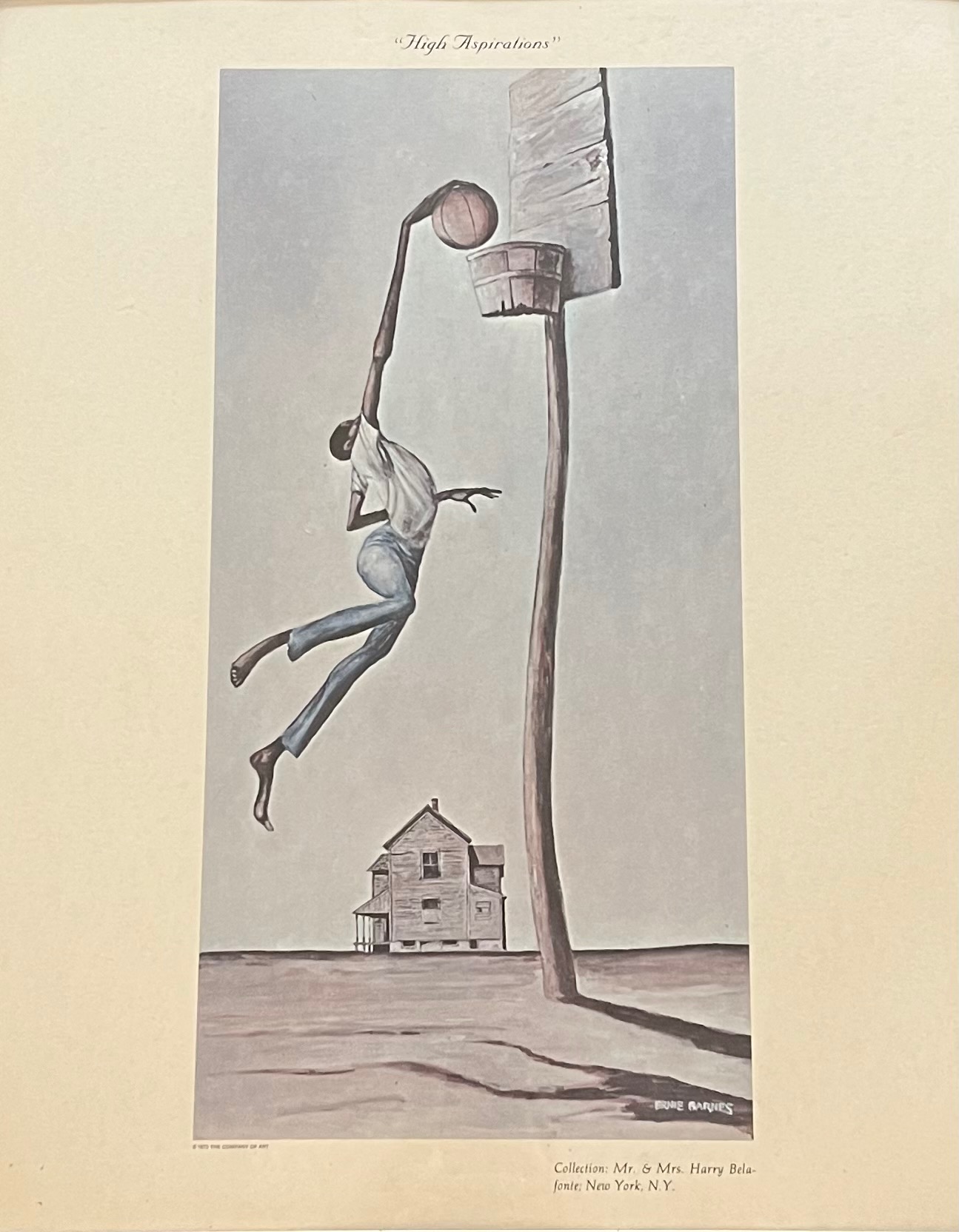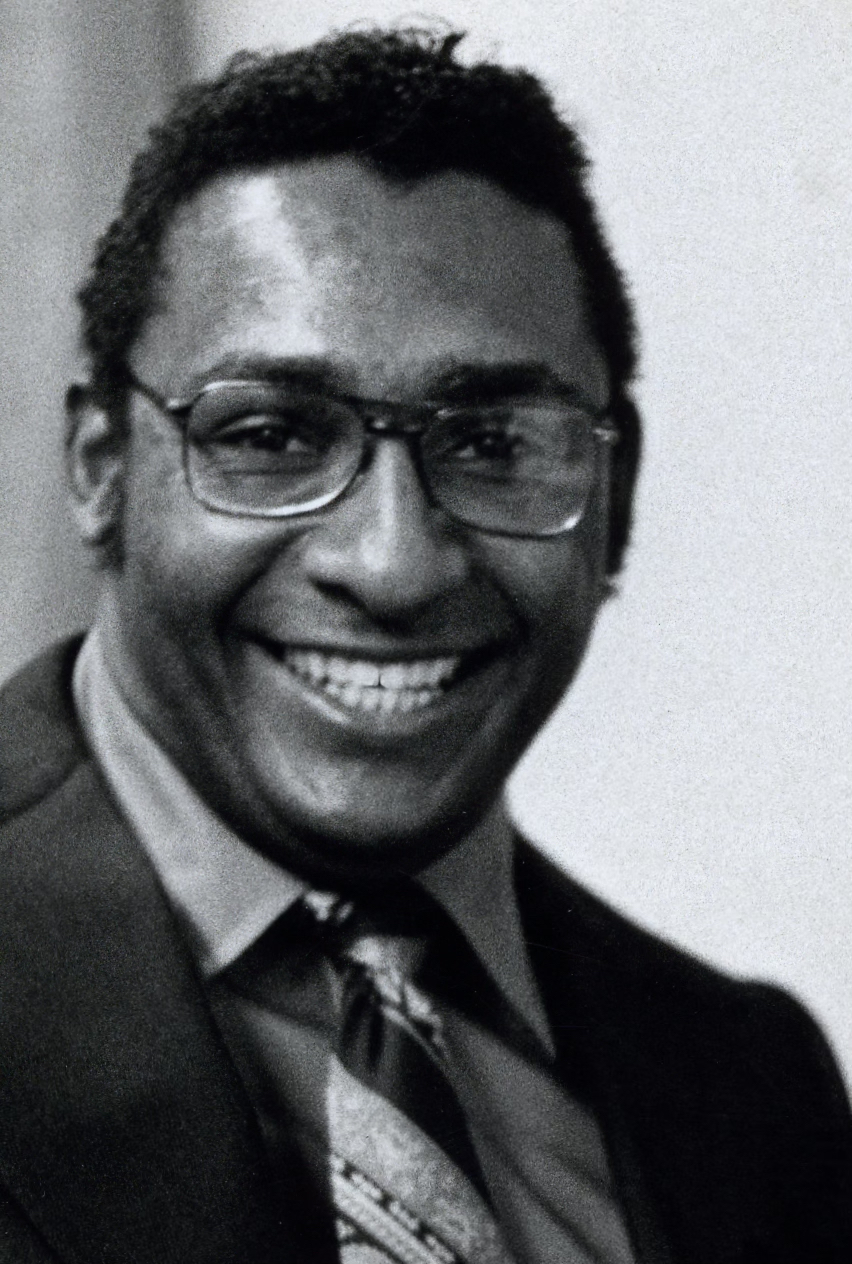Inspiration for Our School Name

The inspiration for our school's name comes from a 1973 painting by Black American artist Ernie Barnes entitled High Aspirations. Stephen purchased a framed copy of this painting in 1980, and ever since it has hung in his home. As a basketball player and coach, he was immediately drawn to the work, and he especially loved how the details of the painting captured the title. Dylan and Caitlin grew up looking at this work of art every day, and when it came time to choose the name of our school, Dylan quickly said let's use the title of the Ernie Barnes painting we all love. Thus, we chose this work of art because both the artist and his painting embody the character traits that we believe are essential for success in learning and in one's career.
The painting depicts an elongated young Black male about to dunk a basketball into a homemade wooden basketball hoop. He is playing alone amidst a barren rural landscape with only a large wooden house depicted in the background. The focus of the painting is the young male, seemingly of high school age, his dreams of the future, and his willingness to extend himself (literally) in the pursuit of them. Like Jay Gatsby in Fitzgerald's famous novel, he is not going to let his impoverished origins, social isolation, or uninspiring landscape limit his dreams. In fact, they will be the inspiration to make his dreams larger than life.
The painting also reflects the artist's own high aspirations as he overcame societal racism and his own initial physical limitations to become an NFL athlete and the most recognized painter of sports scenes in 20th century America. Barnes was born in 1938 in Durham, North Carolina when Jim Crow laws were still predominant, and he attended only racially segregated schools. A self-described overweight and unathletic child, Barnes was bullied by his classmates and sought daily isolation and refuge in his art sketchbooks. While drawing in his notebook in a quiet area of the school, Barnes was discovered by the masonry teacher, who was also the weightlifting coach and a former athlete. Intrigued with Barnes' drawings, he asked the aspiring artist about his goals and shared his own experience of how bodybuilding had transformed not only his body but also his life. That encounter would begin Barnes' long journey to success, attainable because of his discipline and commitment to attaining his dreams. By his senior year at Hillside High School the once unathletic Barnes had overcome his physical limitations to become the captain of the football team and state champion in the shot put.

Barnes graduated in 1956 with 26 athletic scholarship offers, but he could not attend nearby Duke or the University of North Carolina because of segregation, so he attended the all-Black North Carolina College located across the street from his high school. He majored in art on a full athletic scholarship, equally committed to both drawing and football. At age 18, on a college art class field trip to the newly-desegregated North Carolina Museum of Art in Raleigh, Barnes inquired where he could find “paintings by Negro artists.” The docent responded, “Your people don't express themselves that way.” Not one to let obstacles get in his way or for others to define him, 23 years later (1979) Barnes returned to the museum for a solo exhibition. And in 1999 Barnes was bestowed The University Award, the highest honor by The University of North Carolina Board of Governors, a college that could not accept him because of his race in 1956.
After college Barnes had a very successful professional football career, but he never let his success in football overshadow his love for art. “Football gave him an enormous satisfaction of achievement, of being able to do something extremely difficult, and do it well. Art, however, allowed him the privilege to interpret for the public his concepts of the relationship between art and life.” Barnes believed that his years as an athlete gave him unique, in-depth observations, and he was very influenced by his college art instructor, Ed Wilson, who told him to paint from his own life experiences, “to pay attention to what my body felt like in movement. Within that elongation, there's a feeling. And attitude and expression. I hate to think had I not played sports what my work would look like.” In 1966 Ernie Barnes retired from football to commit himself full-time to his art.
Numerous artists have been influenced by Barnes' art and unique “neo-Mannerist” style. He is best known for his 1970s painting Sugar Shack that gained international exposure when it was used on a 1976 Marvin Gaye album and as well on the Good Times 1980s television series.
Thus, we have chosen to use both Barnes' life and one of our favorite paintings of his to embody the high aspirations we hope all our students have and that we hope to nurture in our school.